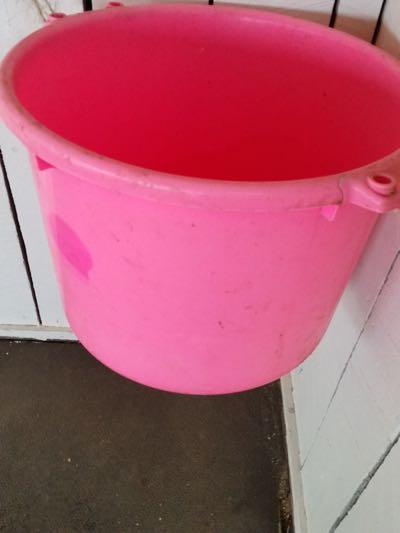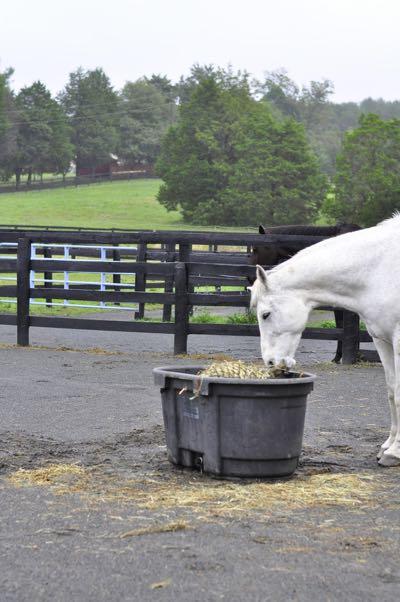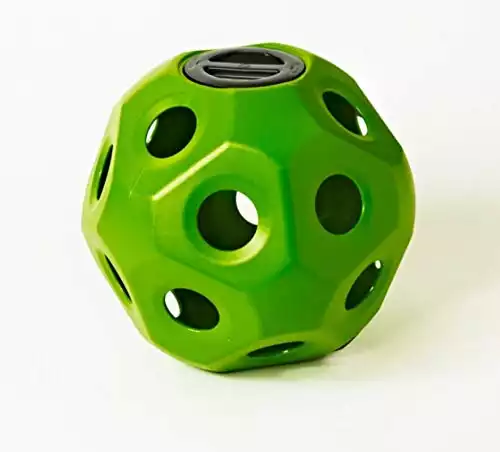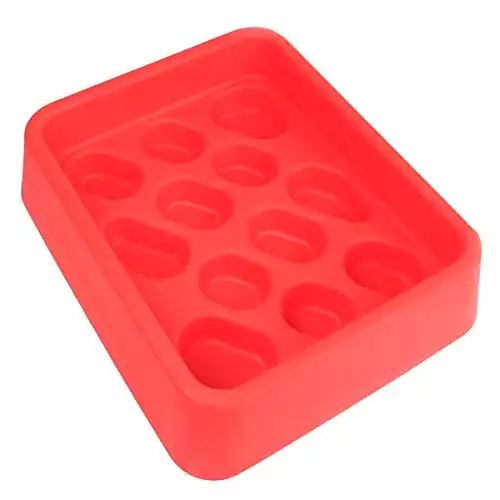How to stop your horse from eating sand.
- It’s always a good idea to do your best to try and stop your horse from eating sand and dirt. This usually isn’t something horses eat on purpose, and it can be pretty easy to change.
- But first a few reminders about horses and sand and their digestive systems. Get prepared for some vague things…. Sand is definitely a possible danger for horses. It can become a resident in a horse’s digestive system, and it can cause major colic issues as well as diarrhea and weight loss.
jump to shopping
How is sand detected in your horse’s digestive system?
- Sand in a horse’s digestive system is tricky to diagnose, although there are several methods that your veterinarian can use.
- A simple stethoscope can alert your veterinarian to sand in your horse’s belly about 75% of the time. Other (expensive and difficult) ways to check are by surgery or abdominal x-rays and/or ultrasound. The size and power of the X-ray machine needed means that you will likely need to trailer your horse to a hospital for this to be done.
- Your vet may also be able to find sand upon a rectal exam – but only if the sand accumulation is massive and severe enough to cause an impaction, at which time your horse is already in a very serious pickle.
- You can also check for sand passing through with a simple poop in a bag test. For more info on how to test with a bag or bucket, read this gem! NOTE – this only means he ate sand and he’s now pooping it out. It can’t tell you if there is sand in his belly and how much. Or, you might not get any sand out of this “test” – but he still may have some that he’s not passing.

A great way to potentially spill poop water on yourself, but it doesn’t really tell you much about what’s going on inside your horse.
If you choose to do a test for sand with a plastic bag and a poop ball, remember that this only tests for sand that your horse has passed.
- If you don’t find any sand in the bag, it may be that he has no sand in his belly at all, or it may be that he has sand in his belly and he can’t clear it himself. If you do find sand in the bag, it means that he is passing sand – it doesn’t tell you if he is storing any in his belly.
There’s also conflicting research on the effectiveness of various treatments for sand, specifically psyllium.
- For many years, psyllium given in your horse’s food was the go-to method for clearing sand from your horse. Now, it’s been shown in actual scientific studies that psyllium, mineral oil, and chia don’t help your horse pass any sand.
- At any rate, it’s important to work directly with your Veterinarian to determine is sand in your horse’s belly is a problem and then what to do about it.
What you CAN DO is discourage your horse from eating sand in the first place.
- Obviously, no planning or construction or high-tech feeding system can guarantee your horse will never eat a single grain of sand, but it’s better than doing nothing.
- Start with how your horse eats. Is he totally messy and a tornado, spilling and spreading his hay and rations everywhere? Or would he rather use a napkin, fork, and knife to eat his noms?

Big corner feeders in stalls are good – especially when the mats underneath are swept clean of shavings! Bigger tubs seem to work better to catch dribbles, too.
- Do some furniture rearranging with his tubs and or buckets. If he eats in the stall, you can reduce the amount of bedding he spills onto and hoovers up by sweeping the shavings away from the buckets.
- The type of shavings may come into play also – giant flakes of shavings are more likely to be picked around than tiny flakes or sawdust or wood pellets.
- If he’s an outside eater, you have a kazillion options other than a pile of hay on the ground or his rations in a tiny bowl on the ground. Slow feeders are great for hay, this reduces waste and reduces the amount that your horse eats from the ground directly. You may find that a slow feeder that’s in a tub or box works even better.

This slow feeder is great – and some mats under it may make it better.
Larger feeders may work better out in the field or paddock for your horse.
- If he’s a food dropper and spreader and tornado maker, more of what he re-arranges will land back in the tub. You can also create a designated feeding area on a few mats with the feeder or bowl there.
- Interlocking mats are super here, and mats of any style help keep your horse’s feed area from becoming a huge muddy mess (usually!)
- If your horse has access to grass paddocks or pastures, keep an eye on eaten down, worn, or thin areas. Horses love to eat the short grass – it’s trying to grow, so it’s high in sugar and therefore tasty. Because it’s already short, your horse has a greater chance of eating some of the ground as well. Smart pasture rotation and maintenance will help prevent this.
- You may also want to consider soaking or steaming your horse’s hay. Hay is dusty and dirty, and these methods reduce the amount of dirt that comes with the hay. But, wet hay might end up being “sticky” if it ends up on the ground.
How else do you discourage your horse from eating sand while he eats?

Stock up here for your horse supplies! As an Amazon Associate, I earn from qualifying purchases, but it’s ZERO extra cents to you. You can also visit my Amazon storefront here: PEG storefront.
Other sizes available, too!
Basket-style grazing muzzle to help keep a horse at a healthy weight and help reduce the risks of colic and laminitis in some horses.
Use code 15PROEQUINE for savings sitewide on muzzles, halters, slow feeders, and more.
One side of this innovative slow feeder is solid - perfect for pastures! It will hold a small bale of hay.
Use code 15PROEQUINE for sitewide savings on slow feeders and more.
2 sizes of this slow-feeding hay toy - snack size holds a few flakes, and the half size holds 1/2 bale.
Use code 15PROEQUINE for sitewide savings on slow feeders and more.
Thank you!












![Hay Nets for Horses – 6x6 Fits Bales [4x4-6x6]” OR [3x3x8-4x4x8], Hay Bag for Livestock](https://proequinegrooms.com/wp-content/uploads/2023/12/61OS5f5OuRL._SL500_.webp)













